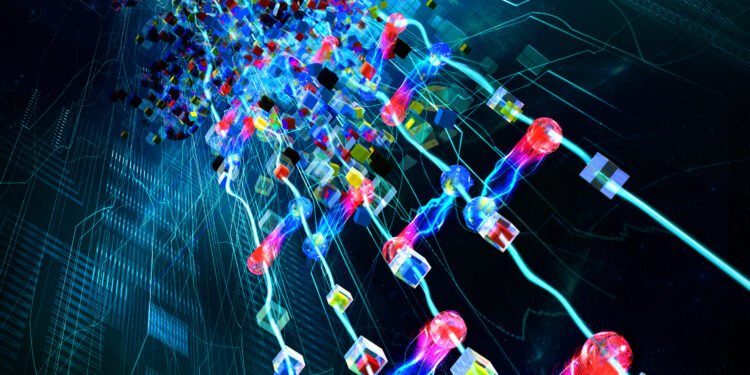
Researchers from the University of Innsbruck have unveiled a novel method to prepare quantum operations on a given quantum computer, using a machine learning generative model to find the appropriate sequence of quantum gates to execute a quantum operation.
The study, recently published in Nature Machine Intelligence, marks a significant step forward in realizing the full extent of quantum computing.
Generative models like diffusion models are one of the most important recent developments in machine learning (ML), with models such as Stable Diffusion and DALL·E revolutionizing the field of image generation. These models are able to produce high quality images based on text description.
“Our new model for programming quantum computers does the same but, instead of generating images, it generates quantum circuits based on the text description of the quantum operation to be performed,” explains Gorka Muñoz-Gil from the Department of Theoretical Physics of the University of Innsbruck, Austria.
To prepare a certain quantum state or execute an algorithm on a quantum computer, one needs to find the appropriate sequence of quantum gates to perform such operations. While this is rather easy in classical computing, it is a great challenge in quantum computing, due to the particularities of the quantum world.
Recently, many scientists have proposed methods to build quantum circuits with many relying on ML methods. However, training of these ML models is often very difficult due to the necessity of simulating quantum circuits as the machine learns. Diffusion models avoid such problems due to the way they are trained.
“This provides a tremendous advantage,” explains Muñoz-Gil, who developed the novel method together with Hans J. Briegel and Florian Fürrutter. “Moreover, we show that denoising diffusion models are accurate in their generation and also very flexible, allowing to generate circuits with different numbers of qubits, as well as types and numbers of quantum gates.”
The models also can be tailored to prepare circuits that take into consideration the connectivity of the quantum hardware, i.e., how qubits are connected in the quantum computer. “As producing new circuits is very cheap once the model is trained, one can use it to discover new insights about quantum operations of interest,” says Muñoz-Gil.
The method developed at the University of Innsbruck produces quantum circuits based on user specifications and tailored to the features of the quantum hardware the circuit will be run on. This marks a significant step forward in unleashing the full extent of quantum computing.
More information:
Florian Fürrutter et al, Quantum circuit synthesis with diffusion models, Nature Machine Intelligence (2024). DOI: 10.1038/s42256-024-00831-9
University of Innsbruck
Citation:
Machine learning method generates circuit synthesis for quantum computing (2024, May 21)
retrieved 21 May 2024
from https://techxplore.com/news/2024-05-machine-method-generates-circuit-synthesis.html
This document is subject to copyright. Apart from any fair dealing for the purpose of private study or research, no
part may be reproduced without the written permission. The content is provided for information purposes only.










